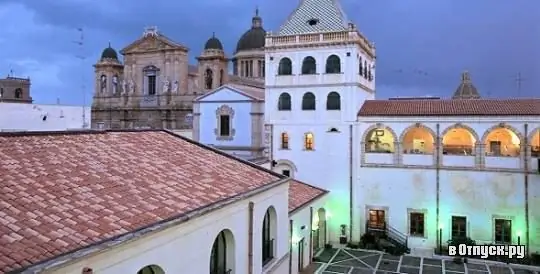
Description of the attraction
The Monumental Complex of St. Peter is a series of buildings connected to each other and used for various social and cultural purposes. In addition, it is also an architectural monument. There is a conference hall for 160 seats, a lecture hall, a children's center, a cinema, a video library and a photo library. The 16th century Benedictine Monastery, under state protection, is now home to the Strupp City Library and the Marsala City Museum. And the old cells of the square tower and the former refectory have been turned into exhibition halls.
The Marsala City Museum is divided into three sections. The first is dedicated to the national hero of Italy Giuseppe Garibaldi and the Risorgimento movement. This section was founded by Giacomo Giustolisi: it contains various exhibits telling about the period of the unification of Italy - old leaflets, original documents, paintings and portraits, uniforms, weapons, including sabers, revolvers, rifles and bayonets, as well as photographs, medals, etc. many other things related to Garibaldi's famous Expedition of a Thousand. In the same room, you can see the same painted armchair in which Garibaldi is said to have rested after landing in Sicily.
The second section is devoted to archeology. It is the seat of the International Center for the Study of the Phoenician, Carthaginian and Roman Heritage, as well as the Mediterranean Research Laboratory. The exhibits presented here are various vases, vessels, small amphorae, bowls and other utensils made in the era of Lilybei's existence. The items are housed in three rooms and date back to the 4th century BC. - 2nd century AD
Finally, the Folk Traditions section contains costumes worn on Holy Thursday and donated by monks from St. Anne's Church, and masks. The tradition of celebrating Holy Thursday goes back 300 years and is one of the most important in Marsala.






